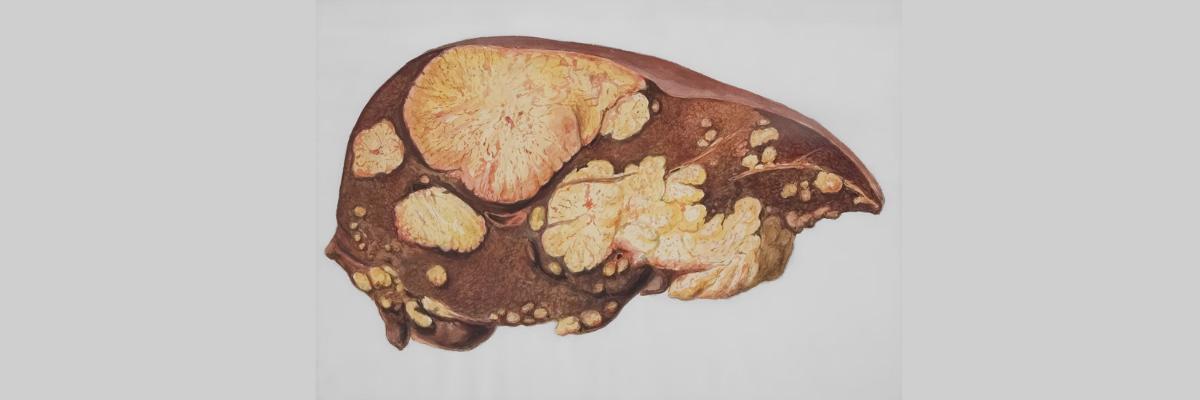Instituto Humanitas Unisinos - a transdisciplinarity essential body dedicated to raising new questions and finding solutions to the challenges of our time.It is about society in the future.It starts from the Christian social human human flesh human human Vitian point of view.
17 October 2025
Cases of non-alcoholic steatohepatitis are increasing worldwide.Silent diseases are usually diagnosed late, when there is already severe liver damage.
Statement by Alexander Freund, published by DW, 14-10-2025.
Unpleasant pressure in the right part of the stomach, sometimes you feel bored after eating, difficulty, difficulty concentrating or general.Many patients find symptoms such as food pressure or food - but the cause is usually the liver, which is already enlarged and inflamed.
Non-alcoholic or metabolic steatohepatitis (NASH) may become one of the most underestimated diseases of our time.Liver inflammation and fat accumulation, often a reflection of lifestyle, is spreading rapidly – not only in the US and Europe, but now also in India and other emerging countries.
Experts warn that the number of affected people is growing so rapidly, health systems around the world are under pressure.
What is non-alcoholic steatopatitis
Nonalcoholic steatohepatitis (NASH) is an aggressive variant of nonalcoholic fatty liver disease (NAFLD).It develops when fat is deposited in the liver tissue, resulting in chronic inflammation.
When the liver is damaged, individual cells begin to die - doctors call this "tissue death".The liver tries to repair this damage, but it increasingly replaces the active liver cells with conventional tissue that is difficult, a process known as fibrolenesis.The scarring initially causes no symptoms, but the more it develops, the worse the blood flow becomes and the less the liver can perform its functions.
As the process continues, the entire architecture of the liver changes.It blooms, acquires a nodular appearance and gradually loses functions - the final stage, which doctors call cirrhosis.This can lead to serious complications, such as liver failure, bleeding, ascites (accumulation of fluid in the abdominal cavity) and the risk of liver disease.
How Is Fatty Liver Disease Diagnosed?
The problem with Nash is that it usually goes unnoticed for a long time, as there are no obvious symptoms at first.Disorders, abdominal pressure, reduced performance of daily activities or weight fluctuations are often ignored or caused by other causes.
The value of the clogged liver, which can be a sign of liver disease, is often found during a routine examination.Imaging techniques such as ultrasound or fibroscan evaluate the size and thickness of the liver and therefore find the first signs of fibrosis, ie scarring. The final diagnosis is usually a biopsy, where a sample of tissue is taken.
Therefore, late stages usually occur only when liver damage is still severe.Therefore, early detection is crucial for high-risk patients.
The reason is usually lifestyle
Overweight individuals are particularly affected by Nash: About 70 to 80% of all patients are obese.Co-mortality such as type 2 diabetes and high blood pressure are also common.
It is used as a combination of reasons for the Nash Lie.A particularly important factor is the daily requirement, which includes the daily requirement of frequent consumption, soft drinks and saturated fat.Such a lifestyle promotes insulin resistance, the cells of the body no longer respond properly.Metabolic hormones lead to obesity in liver cells.
But it's not just the obese who are affected: people with a high percentage of body fat, who are physically inactive or have a family history of the disease can also develop NASH.Other factors favoring the disease include high fructose intake from soft drinks, high blood lipid levels and type 2 diabetes mellitus.
The risk is particularly high among men, middle-aged people, and residents of urban areas—people whose Western lifestyle and eating habits are often part of their daily lives.
Liver steatosis: a global problem
In the United States, 6.5% of adults — 9 to 15 million people — suffer from it.In India, the number has declined rapidly in recent years.Recent estimates suggest that 30 to 38% of people have fatty liver disease.Obesity, physical inactivity and diabetes also contribute to increased cases of fatty liver.
In Europe, the figures range from 6% to 18%, depending on the country and the risk group.Latin America, the Middle East and North Africa have similar prevalence rates, with values above 12%.In the rest of Africa, NASH is still rare, but cases are increasing in urban areas.
What is the recommended treatment for rash?
Medication is prescribed only in isolast cases.Co reduce inflammation, a lifestyle change is recommended, with more exercise, a diet rich in fiber, with less sugar and less fat, and weight loss.
Dietary interventions, such as intermittent fasting or the 5:2 diet, may also help treat existing fatty liver disease and prevent NASH.The 5:2 diet involves eating normally five days a week and significantly reducing your calorie intake on the remaining two days, usually around 500 to 600 calories per day.
- Poor nutrition increases the development of chronic diseases
- Presentation of the effects of ultra-treatment and people
- The Rise of Ultra-Processed Foods: The End of Home Eating?
- The ultra-processed food industry will never put the interests of public health before their profits.Exclusive interview with Maria Laura Luzada
- Whole food consumption must be healthier and more nutritious than junk food
- Food waste and loss.Online Magazine, Issue 452
- Five foods that are not as healthy as they seem
- ultra nutrition
- Global Syndemic: What are we talking about?The relationship between obesity, malnutrition and climate change.Exclusive interview with Ana Paula Bortoletto
- Research links early deaths to high intake of processed foods
- "Instead of investing in alternatives, interest in building hydropower plants can earn large sums of money in works."An exclusive interview with Philip Fernside
- "Food is the most powerful tool we have to change the world."Interview with Carolyn Steele








